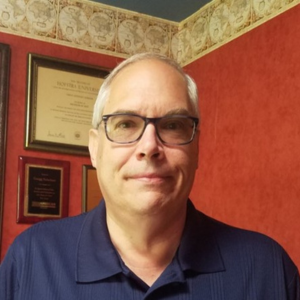Turning Student Voice into Change
Gregg Scheiner is a Mediator, Trainer, and Training Coordinator for the Education and Assistance Corporation in New York. Through this work, Gregg discovered the IIRP Graduate School and began his journey using restorative practices in his conflict resolution and mediation work. Gregg completed the requirements for a Graduate Certificate in Restorative Practices and went on to earn his M.S. at the IIRP Graduate School. After graduation, Gregg utilized restorative practices with a local school district to coordinate a campaign against vaping. This process created change and sparked an initiative among students that will continue to carry on far beyond the initial reaches of the circle, radiating change throughout an entire school.
Q: What brought you to the IIRP?
A: I work for a Community Mediation Center that partners with the Office of Court Administration (OCA). The OCA provides funding for organizations and offers training around alternative dispute resolution. I attended one of the training courses taught by the IIRP’s Dean of Continuing Education Mary Jo Hebling. It was at this training that I was introduced to the Dean of Student Services Jamie Kaintz who explained the graduate certificate program to the group. I was quite interested in the certificate program, and I inquired with the Student Services office. It was a spirited discussion and I signed up for the certificate program shortly after. The Student Services staff was always supportive and provided guidance throughout my educational journey and beyond. In addition, the support and guidance given by Mary Jo Hebling and Professor Frida Rundell, Ph.D., LPC needs to be recognized as they exemplify the values of restorative practices.
Q: Please tell us about your restorative work now and what makes you passionate about it.
A: A wise Dean of Students told me about his philosophy towards discipline. He will not accept a referral about a student unless the referring party can tell him three positive things about the student. Would this not be a wonderful philosophy to adopt and utilize across all disciplines and communities? The future would be brighter and more supportive if this was the case. Currently my restorative practices work is focused on K-12 youth training and coaching support. I had the opportunity to provide a restorative practices community-building training to a local school district cohort of teachers, a dean, a social worker, and an assistant principal. After the training, these individuals used the circle process to hold multiple circles on vaping with the school’s entire 8th grade class. The result was the community of the 8th graders producing a plan to combat vaping in the middle school.
Another result of that circle was the students created a list of seventeen topics they would like to explore and have circles on. It is my heartfelt belief that if we change the narrative and give students and communities the tools to be restorative, they will rise and be agents of change. This is why I do what I do.
Q: What would you like to see in this restorative work in the future?
A: I would like to see further development of restorative practices techniques and philosophy used to respond to issues and needs across all communities and disciplines.
The IIRP has made incredible inroads within the educational community; through the continuing work of faculty and the schools graduates, such as me, it would be outstanding if the IIRP could transfer the skills gained in the educational discipline to other disciplines, such as corporations and non-profits. Fair Process, one of the foundations of restorative practices, has been highlighted and cited in the Harvard Business Review numerous times. The With Box of Social Discipline Window is a useful tool for the business world and has many applications within that discipline and community: just one of many possibilities for exploration and consideration.

